The Airline of the Islamic Republic of Iran, branded as Iran Air, is the flag carrier of Iran, which is headquartered at Mehrabad Airport in Tehran. As of 2023, it operates scheduled services to 72 destinations in Asia and Europe. Iran Air's main bases are Imam Khomeini International Airport and Mehrabad International Airport, both serving Tehran, the capital of Iran. Domestically, Iran Air is commonly known as Homa, which is the name of a mythical Persian phoenix or griffin, and also the acronym of Iran National Airlines in the Persian language. The airline's cargo division, Iran Air Cargo, operates scheduled services internationally using one cargo aircraft.
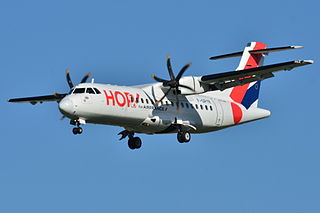
The ATR 42 is a regional airliner produced by Franco-Italian manufacturer ATR, with final assembly in Toulouse, France. On 4 November 1981, the aircraft was launched with ATR, as a joint venture between French Aérospatiale and Aeritalia . The ATR 42-300 performed its maiden flight on 16 August 1984 and type certification was granted during September 1985. Launch customer Air Littoral operated its first revenue-earning flight in December of that year.
Avensa was a Venezuelan airline headquartered in Caracas. It was in the process of financial restructuring, after it went into bankruptcy due to poor management in 2002, with Santa Barbara Airlines taking over its routes, although a single Embraer EMB 120 Brasilia continued to carry the Avensa name in service until it was grounded for good in 2004. Avensa operated from its hub at Simon Bolivar International Airport in Maiquetía.
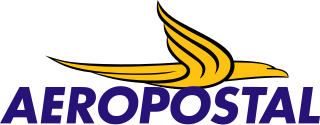
Aeropostal Alas de Venezuela C.A. is a state-owned airline of Venezuela based in Torre Polar Oeste in Caracas, Venezuela. It operates domestic services and international services in the Caribbean. Its main base is Simón Bolívar International Airport. The airline ceased operations on September 24, 2017, after 88 years of service due to its financial position. On August 8, 2018, the company announced that it would begin scheduled service again, first to Havana, Cuba with three weekly flights.
Línea Aérea Conviasa is a Venezuelan airline with its headquarters on the grounds of Simón Bolívar International Airport in Maiquetía, Venezuela, near Caracas. It is the flag carrier and largest airline of Venezuela, operating services to domestic destinations and destinations in the Caribbean and South America. Conviasa is known to make routes from a political perspective rather than a financial standpoint.

RUTACA Airlines is an airline headquartered in Ciudad Bolívar, Venezuela with its home base at Tomás de Heres Airport and a hub at Simón Bolívar International Airport in Caracas.

Maiquetía "Simón Bolívar" International Airport is an international airport located in Maiquetía, Vargas, Venezuela, about 21 kilometres (13 mi) west of downtown Caracas, the capital of the country. Simply called Maiquetía by the local population, it is the main international air passenger gateway to Venezuela. It handles flights to destinations in the Americas, Europe and the Middle East.

Santa Bárbara Airlines Flight 518 was an ATR 42–300 twin-turboprop aircraft, registration YV1449, operating as a scheduled domestic flight from Mérida, Venezuela, to Caracas that crashed into the side of a mountain on 21 February 2008, shortly after take-off. There were 43 passengers on board, with a crew consisting of two pilots and a flight attendant. The wreckage was discovered a day later with no survivors. It was the deadliest aviation accident involving an ATR 42 until Trigana Air Flight 267 crashed in Papua, Indonesia, in 2015 with 54 deaths.

A Conviasa Boeing 737-291 Advanced ferry flight from Maiquetia, Venezuela to Latacunga, Ecuador crashed into Illiniza Volcano. The aircraft had been stored at Caracas and was being ferried to a new owner. There were three crew on board with no passengers. There were no survivors.
Trigana Air is an airline based in Jakarta, Indonesia.
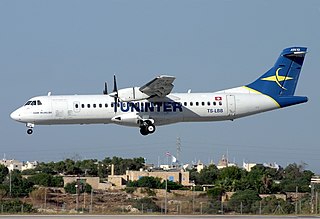
Tuninter Flight 1153 was a Tuninter Airlines international flight from Bari International Airport in Bari, Italy, to Djerba-Zarzis Airport in Djerba, Tunisia. On 6 August 2005, the Tuninter ATR 72 ditched into the Mediterranean Sea about 18 miles (29 km) from the city of Palermo. Sixteen of the 39 people on board died. The accident resulted from fuel exhaustion due to the installation of fuel quantity indicators designed for the ATR 42 in the larger ATR 72. It was also Tuninter's first fatal accident in the 14-year history of the company.
This is a list of aviation-related events from 2009.
This is a list of aviation-related events from 2010.
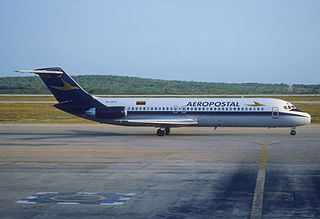
Aeropostal Alas de Venezuela Flight 108 was a short-haul flight from La Chinita International Airport in Maracaibo, Venezuela to Santa Barbara Ed-L Delicias Airport that crashed on March 5, 1991.

Aero Caribbean Flight 883 was an international scheduled passenger service from Port-au-Prince, Haiti to Havana, Cuba with a stopover in Santiago de Cuba. On 4 November 2010, the ATR 72 operating the route crashed in the central Cuban province of Sancti Spíritus, killing all 61 passengers and 7 crew members aboard. Along with American Eagle Flight 4184 it was the worst crash in ATR 72 history until Yeti Airlines Flight 691 crashed 12 years later killing 72 passengers and crew.

Lao Airlines Flight 301 was a scheduled domestic passenger flight from Vientiane to Pakse, Laos. On 16 October 2013, the ATR 72-600 aircraft operating the flight crashed into the Mekong River near Pakse, killing all 49 people on board. The accident was the first involving an ATR 72-600 and the deadliest ever to occur on Laotian soil.
American Eagle is a brand name for the regional branch of American Airlines, under which six individual regional airlines operate short- and medium-haul feeder flights. Three of these airlines, Envoy Air, Piedmont Airlines, and PSA Airlines, are wholly owned subsidiaries of the American Airlines Group. American Eagle's largest hub is Charlotte Douglas International's Concourse E, which operates over 340 flights per day, making it the largest express flight operation in the world.
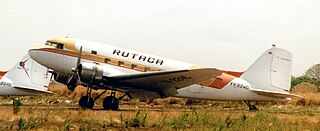
RUTACA Airlines Flight 225(5R225/RUC225) was a domestic tourist passenger flight, operated by RUTACA Airlines from Canaima Airport to Santiago Mariño Caribbean International Airport that crashed during a refueling stop in Tomás de Heres Airport in Ciudad Bolívar, Venezuela on 25 January 2001. The aircraft was carrying 24 passengers and crew members. The aircraft, a Douglas DC-3, crashed into a shantytown shortly after take off from Ciudad Bolívar, killing everyone on board. Eyewitnesses stated that an engine failure had occurred.

West Wind Aviation Flight 282 was a domestic passenger flight from Fond-du-Lac Airport to Stony Rapids Airport, Canada. The aircraft was an ATR 42-320 registered C-GWEA. On 13 December 2017, shortly after taking off from Fond-du-Lac, the ATR-42 lost altitude and hit the ground. All 25 passengers and crew initially survived the crash, but one passenger later died of his injuries in hospital. Investigation on the cause of the crash determined that it was caused by ice contamination on the aircraft.
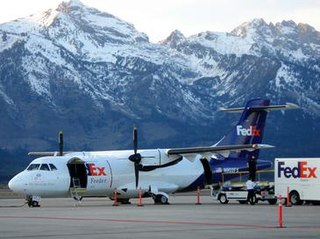
Empire Airlines Flight 8284 was a cargo flight operated by Empire Airlines for FedEx Feeder from Fort Worth Alliance Airport to Lubbock Preston Smith International Airport, Texas. On January 27, 2009, it crashed on final approach to its destination. Both crew members survived with minor injuries but the aircraft was written off.













